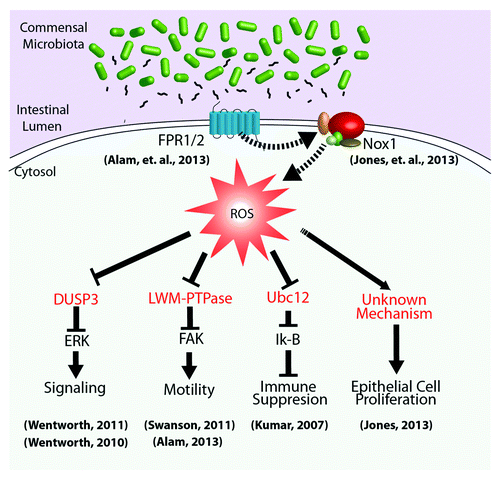Figures & data
Figure 1. Cellular signaling pathways regulated by microbial-elicited ROS generation. Commensal microbiota and/or their products within the intestinal lumen influence the activity of homeostatic processes through the regulation of cellular redox processes. For example, luminal bacteria produce and shed small formylated peptides, which are perceived via formyl peptide receptors localized to the apical surface of gut epithelia.Citation25 These, and likely other receptors, activate NADPH oxidases that transduce microbial signals via highly localized ROS production,Citation23 affecting the oxidation status and thus the activity of redox sensor regulatory proteins (in red), such as DUSP3, LMW-PTPase, and the Nedd8 ligase, Ubc12. Downstream basic cellular processes, including proliferation, motility, and inflammation, can thus be modulated by changes in microbial-dependent cellular redox balance.

